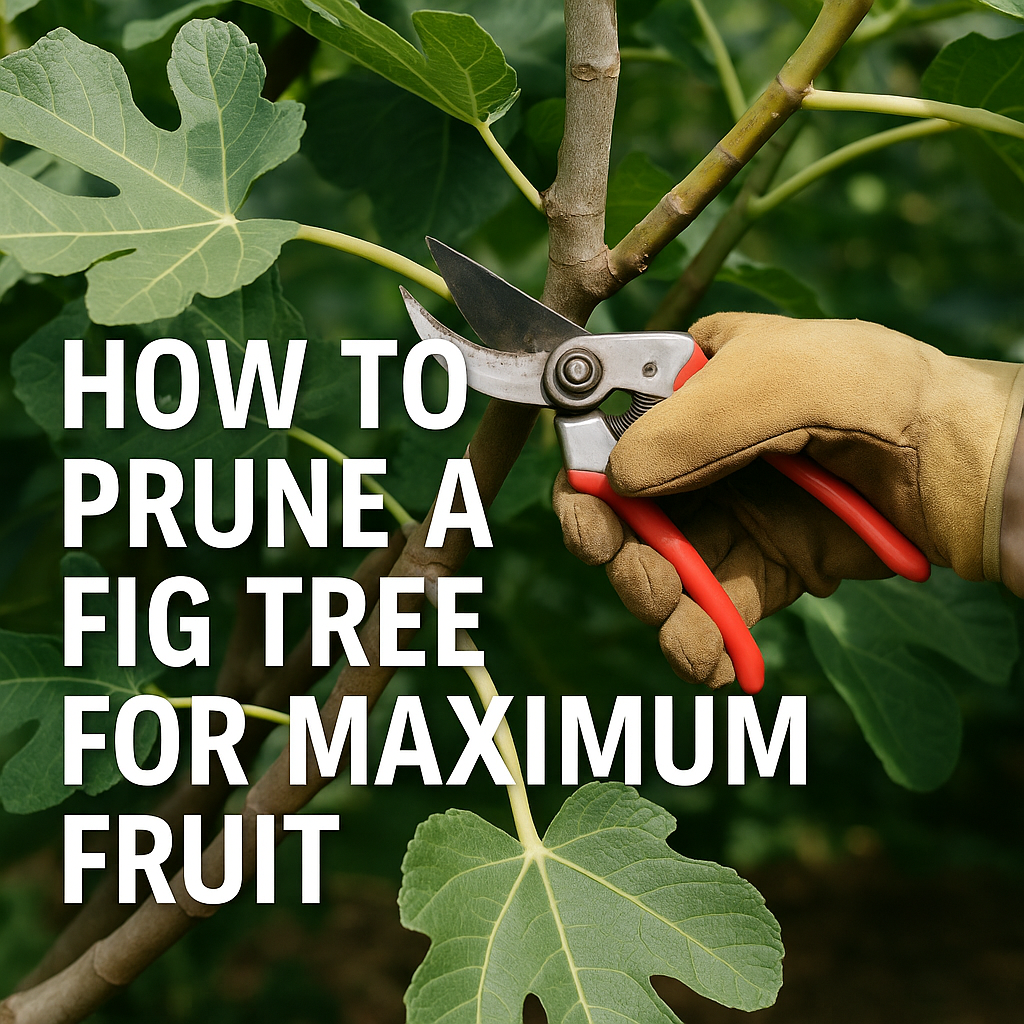Growing Figs
How to Prune a Fig Tree for Maximum Fruit
Let’s get this out of the way: fig trees are wild at heart. You plant one thinking it’ll stay tidy, grow up gracefully, and gift you fruit without fuss. But then? Branches go rogue. Leaves sprawl like they’re auditioning for a jungle scene. And the figs—well, they can be hit or miss if you’re not giving that tree the attention it secretly craves.
That’s where pruning comes in. Done right, pruning a fig tree isn’t just about looking tidy—it’s the secret sauce to getting the biggest, juiciest harvest possible. And it’s not nearly as intimidating as it sounds. Seriously.
So, Why Prune a Fig Tree at All?
You ever see a fig tree that’s never been pruned? It’s a tangle of limbs and lost potential. Pruning is how you steer energy toward fruit production rather than just a mass of leafy chaos. It lets sunlight and air reach deep into the canopy, helping fruit ripen and reducing the risk of pests and diseases.
Plus, pruning helps shape the tree for easier picking. No one wants to wrestle with a ladder in the middle of July just to grab a single ripe fig.
The Best Time to Prune: It’s All About Timing
Here’s the thing—timing really does matter. For fig trees, late winter to very early spring is your golden window. Think February or early March, right before new growth kicks off.
Why not prune in fall? Well, cutting in autumn can wake the tree up when it should be settling down. That new growth could get zapped by cold weather, and no one wants to sabotage next year’s crop before it even starts.
Got a newly planted tree? You’ll do some initial shaping right after planting, and then again in the dormant season. More on that in a sec.
First-Year Trees: Think of It Like Training Wheels
That first year is all about structure. You’re not looking for fruit yet—you’re building a framework. Like training a puppy or setting up the bones of a good sourdough starter.
When you first plant your fig tree:
-
Cut it down to about 24–30 inches tall. Even if it feels harsh.
-
Remove all side shoots below that cut so you’ve got a single leader (or a few if you’re going for a bushier style).
This encourages strong, low branching, which is what you want long term. Trust the process.
The Bush vs. Tree Debate
Quick tangent—figs can be grown either as a multi-stemmed bush or a single-trunk tree. Bush form is popular in colder areas since you can easily protect it in winter by wrapping or bending it. Tree form gives you a cleaner look and makes weeding or mowing around the base easier.
Each has pros and cons, and the way you prune shapes which one you get. Just don’t try to switch styles halfway through—you’ll confuse the tree (and yourself).
The Actual How-To: Pruning Like a Pro Without Overthinking It
Once your tree’s got its basic shape (after year one), here’s how you handle regular pruning:
-
Remove suckers – These sprout from the base and sap energy from the main plant. Gone.
-
Cut out dead or crossing branches – Anything rubbing together or looking sad? Snip it.
-
Thin the canopy – You want light and air to flow through. Aim for 4–6 strong branches growing outward like spokes on a wheel.
-
Shorten long shoots – Trim back about one-third of last year’s growth to encourage more branching (and more figs).
It’s not rocket science. You’re shaping a healthy structure and focusing the tree’s energy where it counts—on fruit.
A Word on Tools (Because They Matter)
Keep it simple, but don’t skimp:
-
Bypass pruners for small branches
-
Loppers for thicker limbs
-
A pruning saw for anything stubborn
- Using a small clipper on a large branch can crush instead of cut. This can slow down the healing process and possibly introduce diseases.
-
Oh, and clean your tools! Dirty blades can spread diseases faster than gossip in a small town.
Mid-Season Pruning: Yes, You Can
Sometimes, a little summer cleanup is in order—especially if your tree’s going full drama queen with overgrowth.
If things get too leafy and dense in July or August, you can thin it out a bit to let in more light. Just don’t go crazy. You still want enough leaves to feed the tree and protect developing fruit from sunburn. (Yep, figs can sunburn.)
Old, Overgrown Trees: Time for a Fig Tree Makeover
Inherited a neglected fig tree that looks more like a shrub with a secret? Don’t panic. You can rejuvenate an old fig—it just takes a bit of patience.
Start with:
-
Removing about a third of the oldest, thickest branches each year for 2–3 years.
-
Cutting low to encourage new shoots.
-
Shaping as you go so you don’t stress the tree too much at once.
It’s a slow reset, but the payoff is so worth it.
A Few Final Thoughts (And a Gentle Nudge)
Pruning isn’t about perfection—it’s about progress. Every cut is a nudge in the right direction. You’ll get the hang of it with time, and honestly, your fig tree will forgive a few missteps.
And once those fruits start rolling in by the handful—sweet, sticky, sun-warmed—it’ll all feel wildly worth it.
So go grab those clippers. Your fig tree’s waiting.

